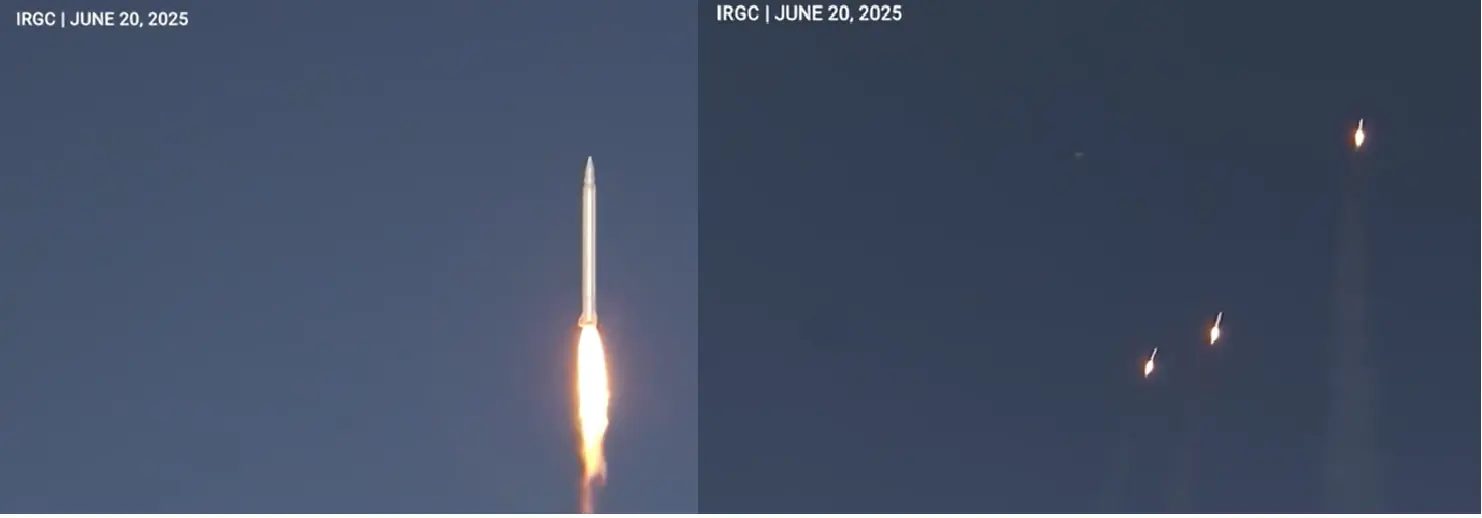
Iran has launched a powerful wave of hypersonic and ballistic missiles at Israel, breaching defense systems
1. Operation True Promise III: Iran’s Most Aggressive Strike Yet
In the early hours of June 19, 2025, Iran’s Islamic Revolutionary Guard Corps (IRGC) launched its most lethal missile barrage to date against Israel, marking the twelfth wave of its ongoing campaign, Operation True Promise III. This strike featured the deployment of Sejjil-2 ballistic missiles and Fattah hypersonic weapons, capable of breaching Israel’s Iron Dome and other layered defense systems.
According to Iranian state media, the missiles targeted key Israeli infrastructure, including military installations and urban centers. Explosions rocked Tel Aviv and Petah Tikva, with reports of civilian casualties and widespread damage. The Israeli Defense Forces (IDF) confirmed that over 100 Iranian UAVs and dozens of missiles were intercepted, but several managed to penetrate defenses, causing significant destruction.
This latest offensive follows a week of intense aerial warfare, with Israel previously launching preemptive strikes on Iranian nuclear and military sites. Tehran’s response, however, has now reached unprecedented levels of precision and force, signaling a shift from deterrence to direct confrontation.
2. Civilian Toll and Global Alarm: The Human Cost of Escalation
The human toll of this conflict continues to rise. Iranian health authorities report over 1,200 injuries and at least 224 deaths, many of them civilians, following Israeli airstrikes on Tehran and other cities. In Israel, the missile barrage has killed at least 24 people and injured nearly 600, with residential buildings in central Israel bearing the brunt of the attack.
Emergency services in both nations are overwhelmed. In Petah Tikva, Israeli medics rescued a four-day-old infant from a collapsed apartment building, while in Tehran, hospitals are operating beyond capacity amid a near-total internet blackout that has crippled communication and aid coordination.
International organizations, including Amnesty International and the United Nations, have issued urgent calls for restraint, urging both sides to protect civilians and return to diplomatic channels. However, with both governments vowing continued retaliation, the prospects for de-escalation remain bleak.
3. Strategic Fallout: What This Means for the Middle East and Beyond
The geopolitical implications of this conflict are profound. Israel’s Prime Minister Benjamin Netanyahu has declared the strikes necessary to neutralize “existential threats” posed by Iran’s nuclear ambitions. Meanwhile, Iran’s Supreme Leader Ayatollah Ali Khamenei has vowed that future attacks will be “more forceful, severe, and precise” unless Israeli aggression ceases.
The United States, while not directly involved, has expressed growing concern. President Donald Trump warned Tehran against targeting civilians or American personnel, hinting at possible intervention if the situation deteriorates further. China, Turkey, and G7 leaders have called for an immediate ceasefire, but diplomatic efforts have so far failed to gain traction.
The conflict has also disrupted global oil markets, with missile strikes damaging refineries in Haifa and along the Persian Gulf. Analysts warn that continued hostilities could trigger a broader regional war, drawing in neighboring states and destabilizing the already volatile Middle East.
Stay updated with the latest news on Rapido Updates. Keep yourself updated with The World, India News, Entertainment, Market, Gadgets, Sports, and many more..